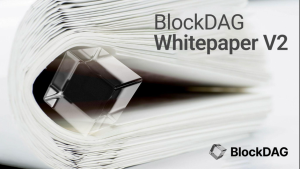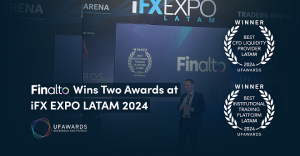What 2017 Had to Say about the Best Marketing Practices?
Compared to baby boomers and Gen X-ers who spend about 46 and 31 hours weekly on TV, respectively, millennials only dedicate about 19 hours. When it comes to mobile use, millennials use their phones about 17 hours per week. Leverate’s Adinah Brown studies this, and investigates why content and marketing that uses modern methodology is essential for FX brokerages

Trends come and go like the speed of light and what once seemed to be best practice, suddenly becomes outdated. The marketing industry is no stranger to various trend-driven developments.
What were the main marketing trends of 2017 and how did they fare? Here are facts and figures revealing the status of this year’s marketing trends:
Millennials leading the move to mobile
Digital marketing guidelines and trends adapt to consumer behavior and content consumption. It’s no surprise that millennials are the leading game changers when it comes to companies’ marketing strategies.
Nielsen, a global information, data, and measurement company, analyzed the unique, digital nature of millennials. In finding ways to connect with the “multi-tasking and distracted” generation, the report found that millennials find advertisements acceptable if the content they’re viewing is free and relevant.
As digital natives, millennials also consume media and content on mobile devices which they carry anytime and anywhere. The Nielsen report revealed that millennials spend the least hours on television compared to older generations.
Compared to baby boomers and Gen X-ers who spend about 46 and 31 hours weekly on TV, respectively, millennials only dedicate about 19 hours. When it comes to mobile use, millennials use their phones about 17 hours per week.
Influencers: Rise in usage and rates
Every marketing expert out there knows the importance of impactful content in 2017. With a flow of information constantly coming at people, a powerful delivery mechanism is a must. “Content marketing is both an art and a science, requiring the ability to stimulate the heart and the head,” says Forbes.
One practice the marketing industry has adopted is the use of influencers. To address the skepticism of millennials, marketers are quickly driving traditional advertising to become obsolete and in their place, are putting well-known and trusted celebrities and public personalities in the forefront.
The massive use of influencer marketing among businesses began in 2016 when companies were reported to have spent $570 million on Instagram campaigns. However, as more companies enlist the help of influencers, the online darlings started raising their rates as well. An influencer with over a million followers could charge an average of $25,000 per Instagram post.
Meanwhile, online personalities with a smaller following are helping smaller businesses for lesser rates. Micro-influencers who have four to six-digit followers charge $250 per post and easily gain the trust of millennials who buy into authenticity and connection more than popularity and the mainstream.
Short Videos, Looping Videos, Live Videos
Forbes recently reported that companies would be spending about $135 billion in digital video marketing in 2017 and 2018. YouTube revealed that their mobile video consumption rises by 100% every year. Now more than ever, consumers are embracing audiovisual content as the main form of gathering and sharing information.
With the rising significance of video in marketing, live video streaming has also taken off in 2017. Facebook and Instagram have adopted the live streaming features of YouTube and Twitch, which have proven to be an effective strategy used by companies and influencers to create a more personal and authentic connection with their audience.
Live video streaming is gradually being recognized as an easy and cost-effective marketing strategy. A decent camera, good sound and lighting and a stable Internet connection are the only things needed to make it happen, since audiences are more attracted to authentic videos, as opposed to those produced by professionals.
What does the future hold?
The year 2017 has also seen new trends that can potentially gain momentum over the next few years. As companies are tapping into futuristic trends like artificial intelligence, holograms, virtual and augmented realities, studying their feasibility and their adaption towards marketing goals will certainly be a feature in the near future.
But for now, the present trends have yet to become the standard, and they’re not going away anytime soon.









